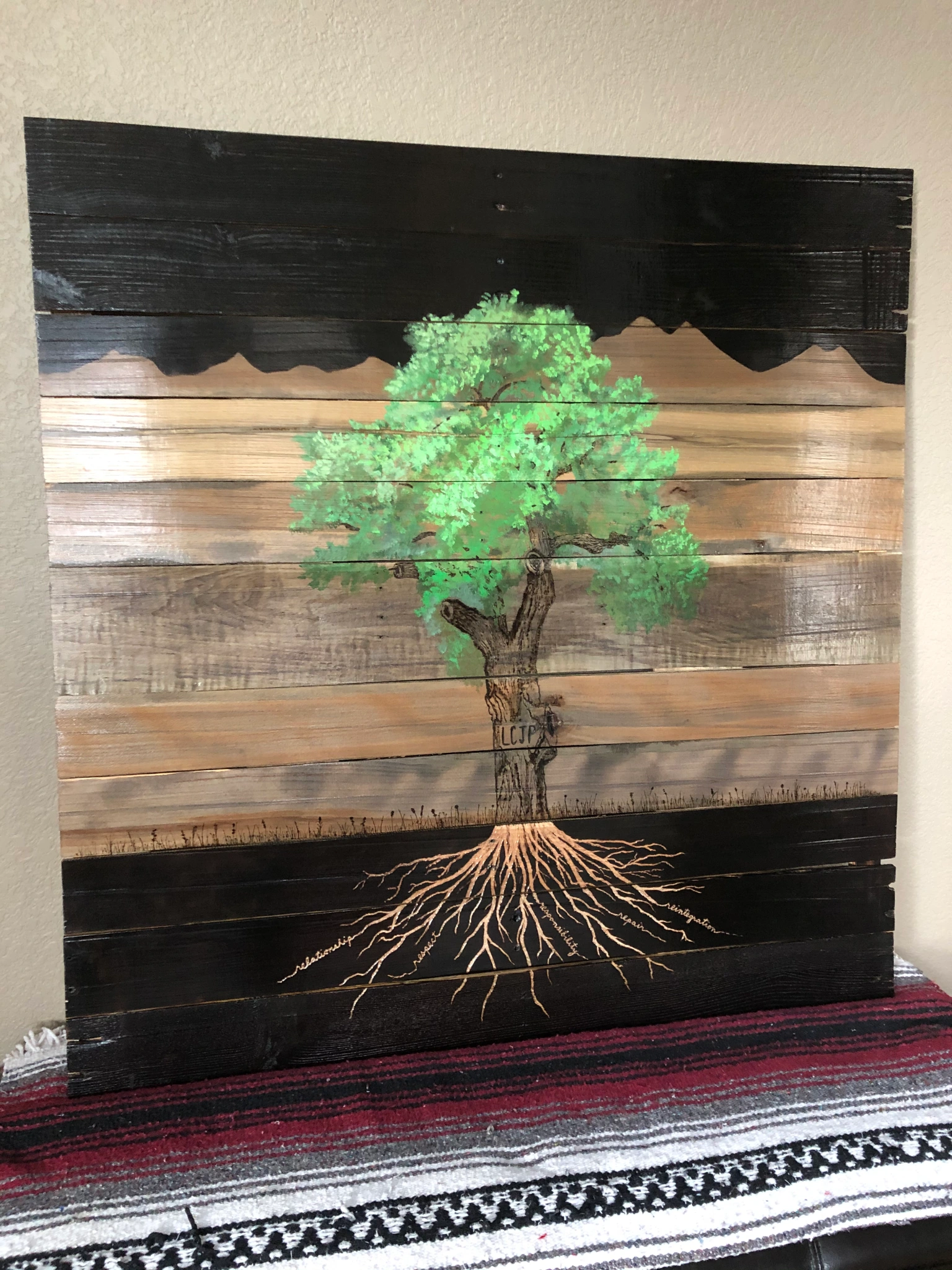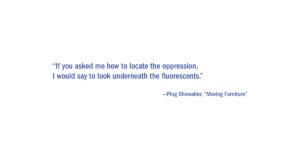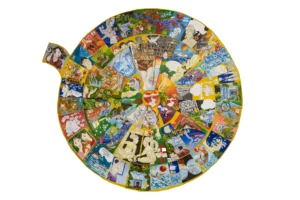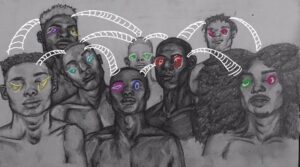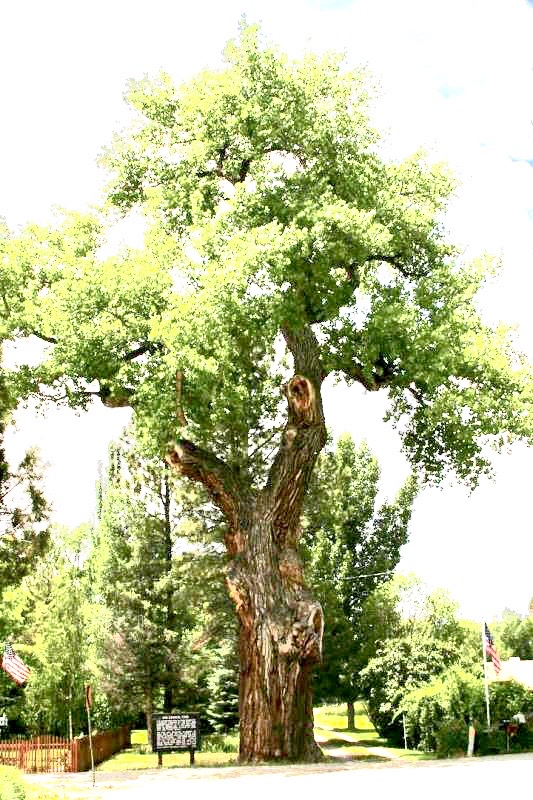
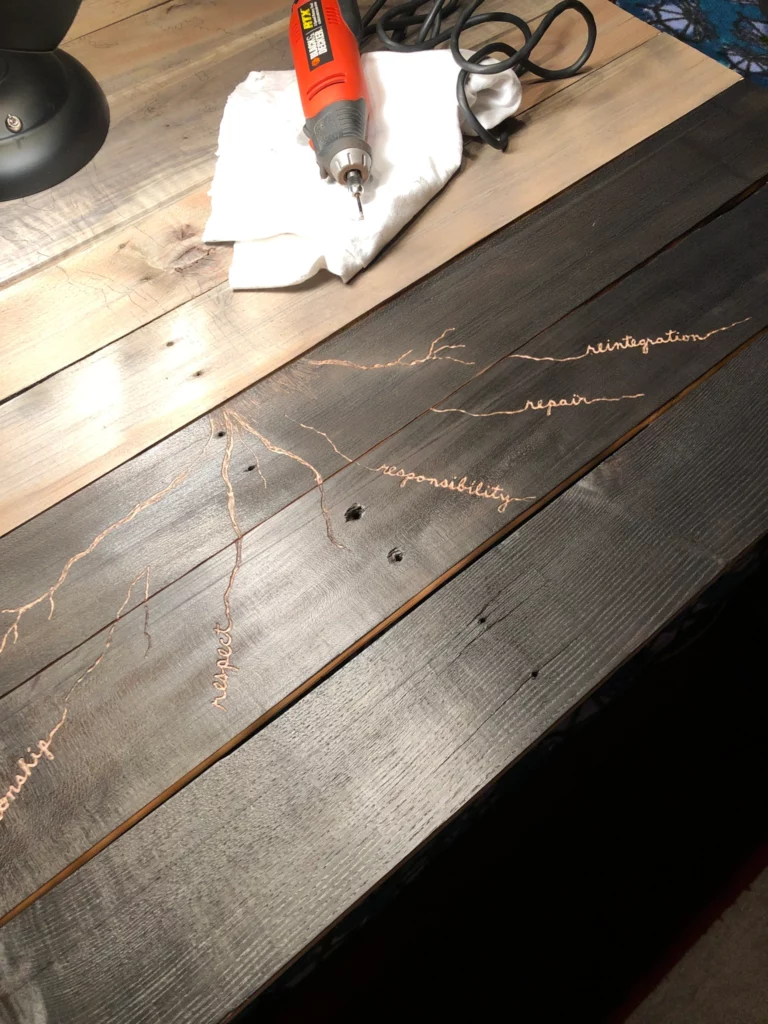
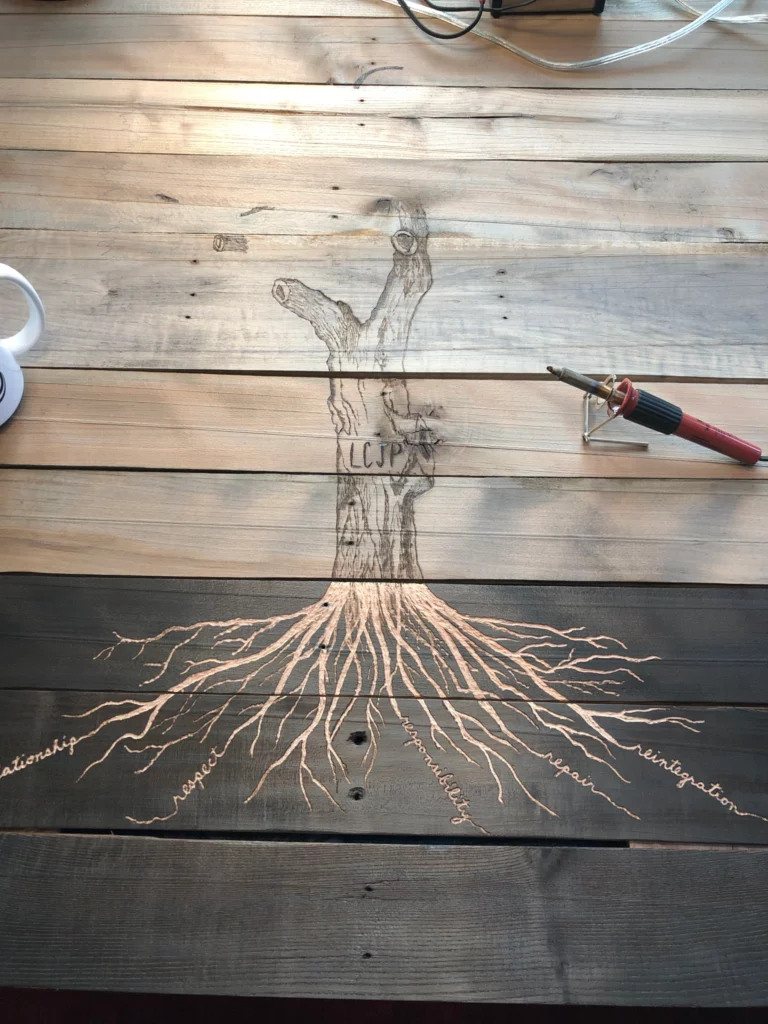

ARTIST STATEMENT
The symbol of this tree on this art piece honors and reminds us of the tradition of talking circles and restorative practices that Indigenous People in North America use and have used for over 1000 years. I found it fitting to represent a tree on wood that had been cast aside and then re-introduced as a thing of value and an opportunity to live on. The roots of the tree carved into the word contain the “5 R’s,” the foundation of Restorative Justice.
As a police officer for the city of Longmont, I was introduced to the Longmont Community Justice Partnership (LCJP) early on in my career by a field training officer who encouraged me to consider restorative justice as I made decisions on how to best resolve issues in our community. After I attended my first circle, I saw the impact the restorative process could have on the lives of those involved and knew that I would continue to utilize this option as often as possible. I became a Liaison with LCJP so that I could learn more and stay connected to the values of restorative justice. Not only have I seen so many lives transformed, it has transformed my own life and shown me how to look at people with a different lens and communicate with more compassion.
I’ve always described myself as artistic, but not creative. I identify more with being a “maker“ than an artist, which is what drew me to woodworking and bringing life back to discarded wood that would otherwise end up returning to the earth in our landfills. When I was asked to create an art piece for LCJP, I was so flattered to be given the opportunity to contribute something to a cause I believe in and it felt important to me to make something meaningful.
After meeting with LCJP to discuss their vision of the type of artwork they might be looking for, the one that aligned most directly with my perception of LCJP and restorative justice was the Ute Council tree. Although only a trunk remains, it still stands where it began its life over 215 years ago, in Delta, Colorado. It was a magnificent Cottonwood that stood almost 90 feet tall. It’s believed that the Ute Indian Tribal Council would hold their meetings around the tree and although it’s never been historically proven, some stories recall that Chief Ouray and his wife, Chipeta, also negotiated treaties with white settlers around the tree.
The process of creating this piece involved rescuing, transporting, and disassembling a wood pallet. I then planed and sanded all of the wood and mounted the wood to braces. I torched the Colorado Front Range Mountain (the birthplace of LCJP) silhouette and the ground and then used a pyrography tool to woodburn the tree trunk and branches and native grasses. I painted the tree leaves and carved in the roots of the tree to include the words, “relationship, respect, responsibility, repair, reintegration.” Polyurethane was applied as a finish to the wood.

